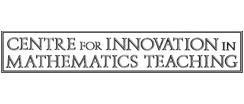Other Sequences
Students are expected to explore sequences other than linear sequences and are required to understand that all sequences are not linear by experiencing a variety of other sequences. This resource list is designed to provide an opportunity for students to make and test conjectures about recursive and long-term behaviour of geometric, quadratic and other sequences that arise within and outside mathematics.
Students are also required to recognise and use sequences of triangular, square and cube numbers, simple arithmetic progressions, Fibonacci type sequences, quadratic sequences, and simple geometric progressions
Visit the secondary mathematics webpage to access all lists.
Sequences
This resource contains three packs of activities increasing in difficulty. The first pack contains relatively simple activities relating to linear sequences. More appropriate to this topic are the following activities in packs two and three.
Pack two contains the activity Patterns in spirals, exploring the number patterns generated when drawing spirals on dotted paper. squidge explains how to produce patterns by combining multiplication and addition, and staircases begins by explores the generation of triangular numbers before moving on to more complex sequences.
Pack three explores Fibonacci style sequences, uses tables of differences to find the nth term of a quadratic sequence and Infinite sequence, and investigates the sums of sequences of fractions whilst the activity. Limits, considers what happens to the sum of sequences as the number of terms increases. Series geometrically explains how to split up a square to show that the sum of a sequence tends to a value of one.
Sequences
This resource begins by explaining how to find the nth term of a linear sequence using tables of differences before progressing to extend the method to look at second differences for quadratic sequences. The text contains explanation, examples and exercises. The final section of the text explores ‘special sequences’ such as even numbers, square numbers, cube numbers, triangular numbers and considers what happens to the values of terms in a sequence as the number of terms increases.
The activities file contains three activities. The first explores how to find the limit of a sequence, the second considers Ulam’s sequence and the third investigates a general formula for generating quadratic sequences.
Sequences
This resource contains a number of instant maths ideas ideal as starter activities, extension work or to be used as probing questions to assess understanding. Beginning with a number of tasks exploring linear sequences, there are also ideas leading to the generation and exploration of quadratic sequences, cubic sequences, Fibonacci sequences and generating sequences using graphical calculators.
Maths and Art
This video sequence explains how to create geometric patterns from a variety of different sequences. The example explains how the sequence of square numbers can be manipulated to create a new sequence which can be used to create a geometric pattern. This idea can be extended and explored by students to produce a visual representation of non-standard sequences.
Spreadsheets Make Sense
This resource contains a number of activities appropriate to this topic:
Again and again requires students to generate a sequence using an iterative process leading to limits.
The Square roots investigation explains how to identify a limit using patterns and algebra.
Squidge uses brackets to create an algebraic expression to investigate sequences.
Differences looks at the differences between successive terms of sequences generated from linear, quadratic and cubic mappings.
Strings explores numbers which are formed from the integer parts of terms of sequences.
In Converging sequences, students explore the limit of a sequence formed from the ratios of corresponding terms.
In Geometry sequences, students investigate infinite sequences with finite sums.
Algebra Makes Sense
This resource from SMILE contains twenty activities focusing on algebra. The activities address different aspects of algebra and are appropriate for a range of abilities. The activities could be used to consolidate existing knowledge or introduce new ideas. They all include guidance on how to use them. The activities include:
- ”Whose rule is correct?” which looks at constructing and solving linear equations including brackets and negatives, generate sequences from term to term or position to term definitions, find the nth term. The activity starts with word descriptions which students compare to term to term rules. A useful activity for getting students to justify algebraic rules based on the structure of the problem.
- Fibonacci-type sequences – investigate Fibonacci sequence.
Number and Algebra
This resource is part of a larger resource - Number and Algebra Instant Maths Ideas
Each topic contains a number of questions or activities designed as inspiration for starters, extension questions or probing questions, useful to supplement lesson plans. Each idea is accompanied by teachers' notes. The idea behind the book is that teachers can take it into the classroom and use the ideas straight away, annotating as necessary and adding their own suggestions.
The resource includes:
1.17 Triangle numbers. This section introduces the idea of Triangle numbers including how it can be illustrated using equilateral or right-angled isosceles triangles of dots. It explores the use of triangle numbers and similar sequences Ina range of contexts.
1.19 Sequences. This section starts by considering the difference between term to term and position to team rules. This section looks at a number of sequences generated in a range of contexts. Students are encouraged generalise by proving sequences works in all cases. Pupils often confuse proving a result for all values of n with checking a result for a few particular values of n. Proving a rule needs some insight into what is going on, students are encouraged to use clear diagram or consider the problem from different angles. Includes linear and quadratic and other sequences expressed as an iterative formula.
Focus Year 10/11 Algebra Extension
This Century Maths Algebra Extension Focus book is aimed at more able students.
Section 1: Number patterns and formulae focuses on a range of sequences produced by growing figurate patterns, relations within Pascal’s triangle, number sequences, use of difference method, use of reciprocal in exploring relative size of the sun, use of indices, solving inequalities.
Sequences
This resource contains six problems which explore arithmetic and geometric sequences. Students are asked to make observations about sequences, create a number of different sequences that all have the same sixth term, solve a question and then explore what happens if the question is altered slightly and find general rules for arithmetic sequences and geometric progressions given a variety of different clues. Produced for post 16 these short activities could be used to challenge students who are confident working with arithmetic and geometric sequences, including sequence notation.
Developing an Exam Question: Generalising Patterns A8
AnchorThis resource is from the DfE Standards Unit, students learn to: use past examination papers creatively, explore, identify, and use pattern and symmetry in algebraic contexts, investigate whether a particular case can be generalised further, understand the importance of counter-examples, develop the ability to generalise from geometric patterns and devise and explore their own questions in this context. Most learners will be familiar with looking for growth patterns in geometric patterns and many will be able to express these patterns verbally. However, it may be that they will find it more difficult to express the nth term algebraically. Students work in pairs on a GCSE examination question – Growing cross patterns. Whole group discussion is then used to discuss the approaches used.
Leonardo of Pisa
This is an investigation into how the Fibonacci sequence gives rise to the Golden Ratio. The supporting spreadsheet allows the initial values of the sequence to be changed and an interactive graph shows that the ratio of successive terms always tends to a limit that is the Golden Ratio.
A definition of the sequence is given in terms of n. This is then used to calculate the Golden ratio. The mathematics involved includes fractions, indices and surds.






